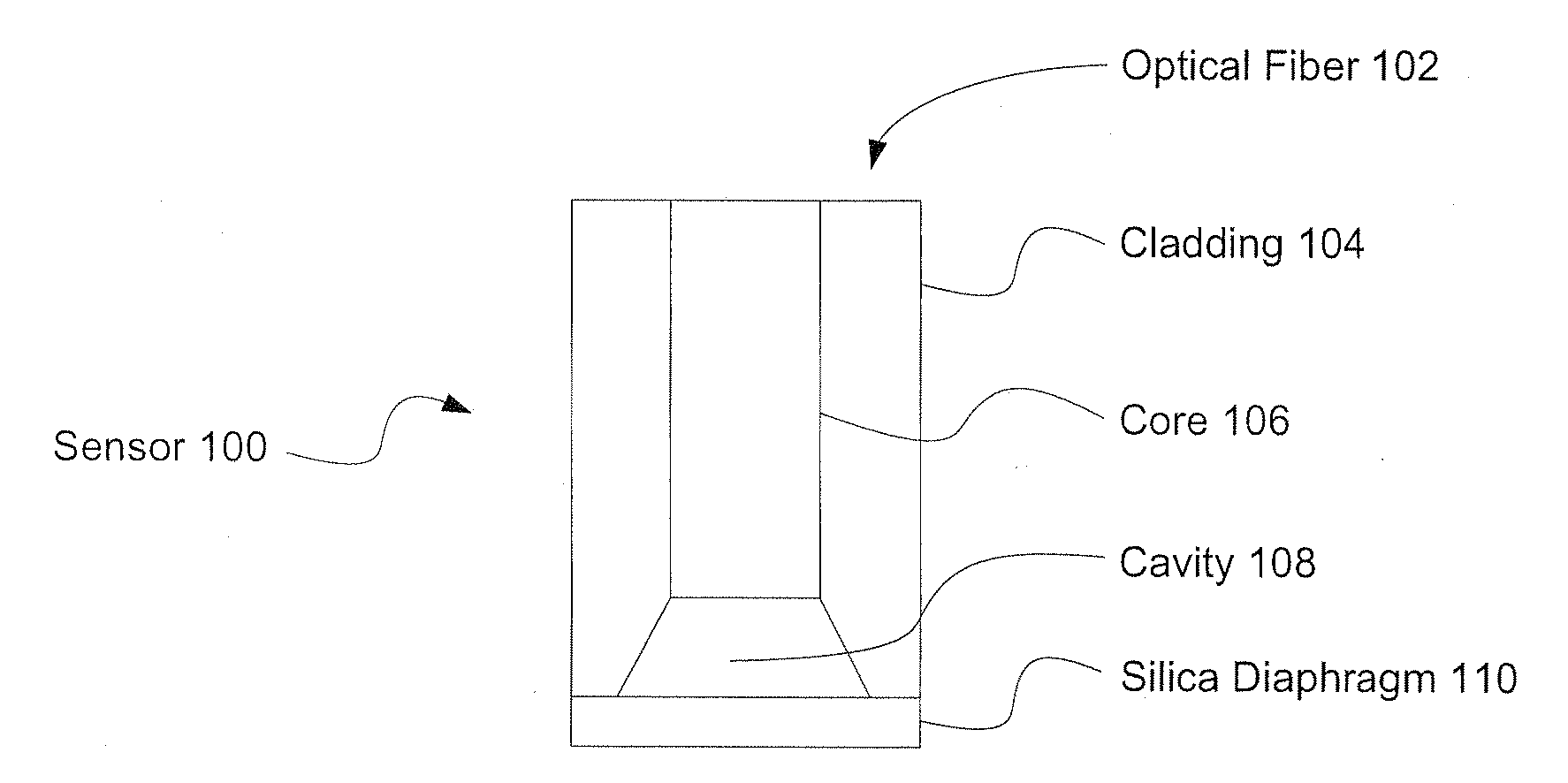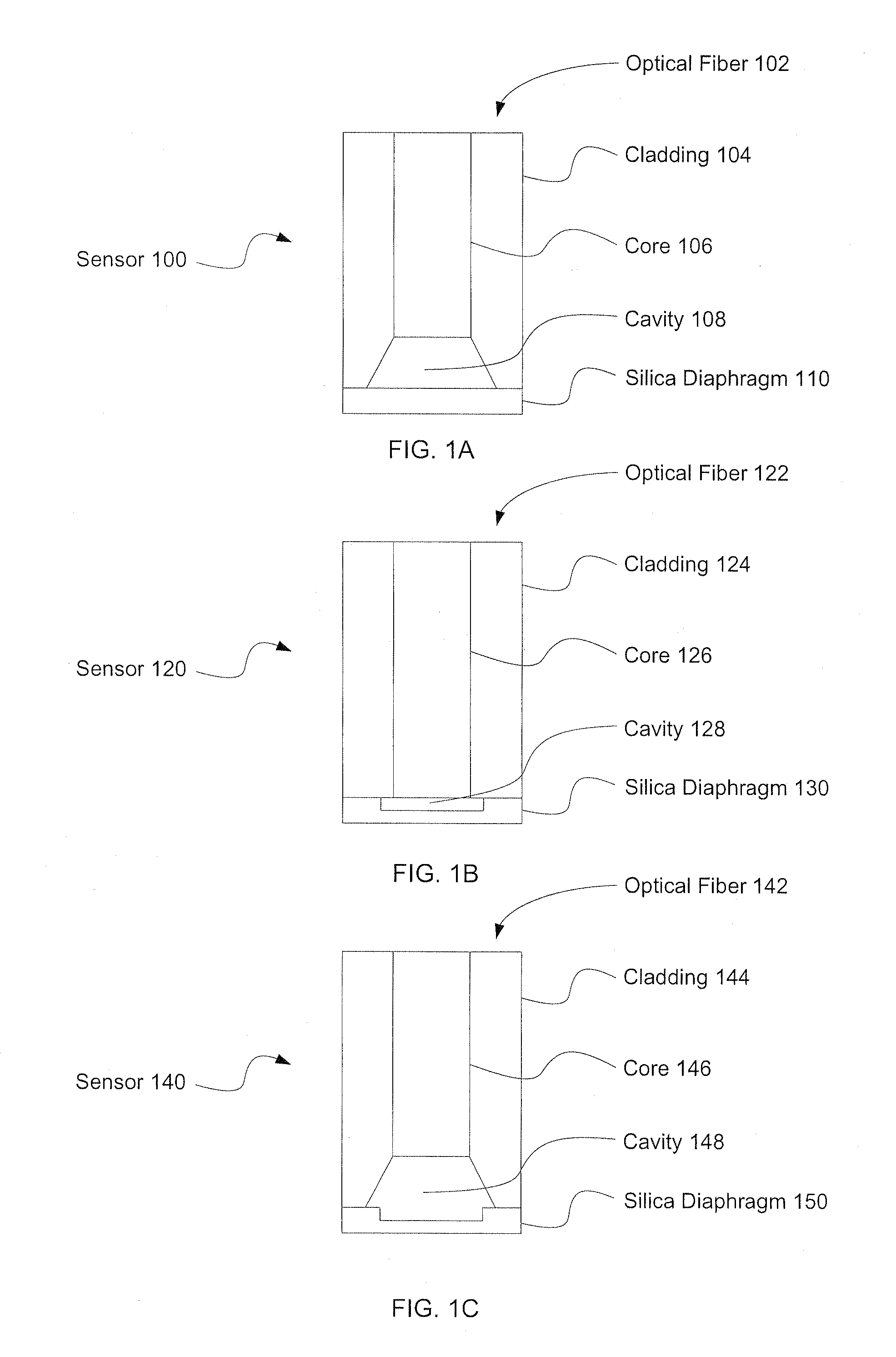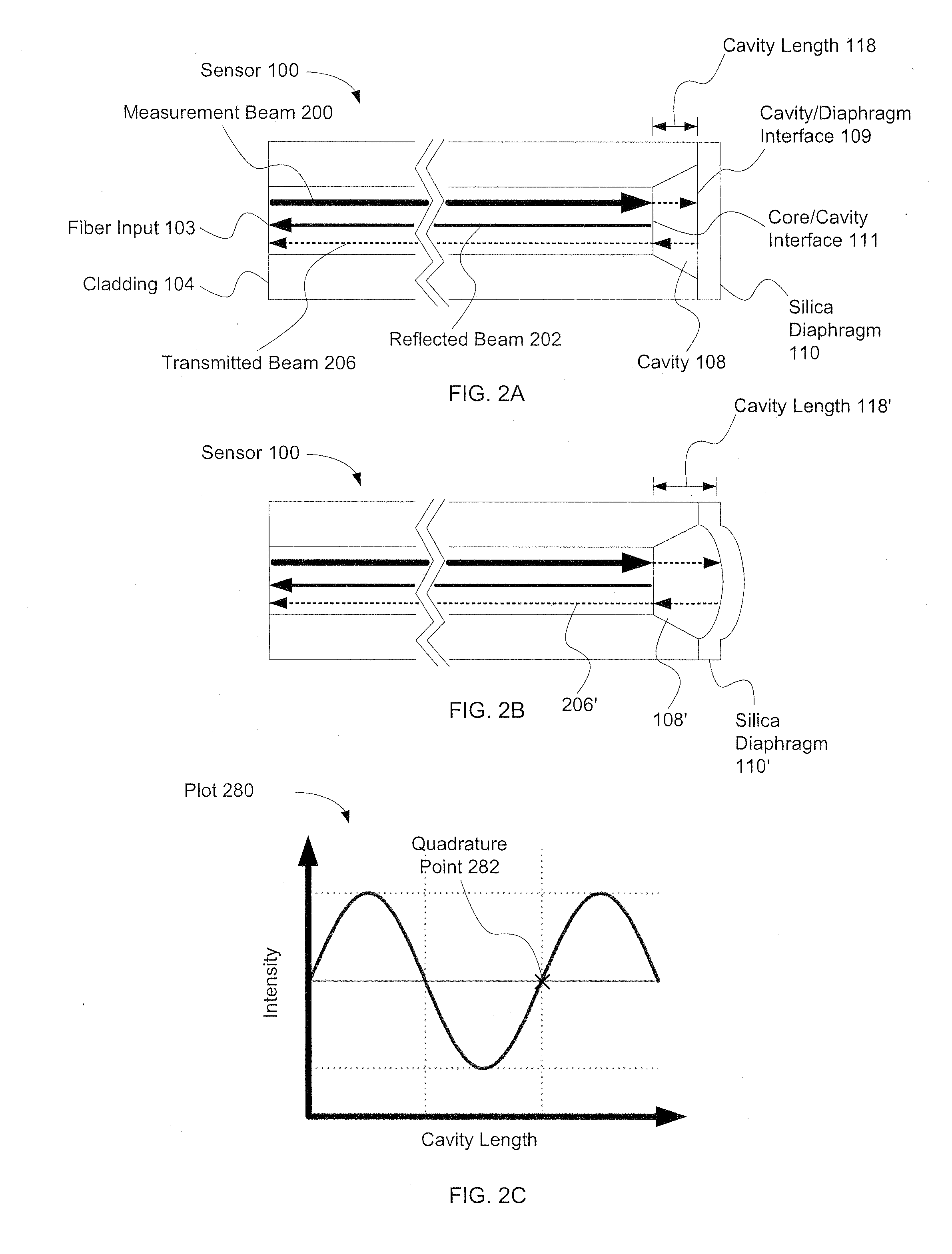Optical Fiber Pressure Sensor With Uniform Diaphragm And Method Of Fabricating Same
a technology of optical fiber and pressure sensor, which is applied in the direction of instruments, angiography, paper/cardboard containers, etc., can solve the problems of sensor producing unpredictable, unrepeatable measurements, and micromachined cavities typically having limited cavity lengths, so as to achieve uniform thickness, increase sensitivity, and the effect of high pressur
- Summary
- Abstract
- Description
- Claims
- Application Information
AI Technical Summary
Benefits of technology
Problems solved by technology
Method used
Image
Examples
example 1
Fabrication of an Optical Fiber Sensor
[0092]FIG. 10 shows how the recess was etched into the fiber tip. Single-mode fiber 1001 (SMF-28, Corning) was fusion-spliced to graded-index multimode fiber 1003 with a 62.5 μm diameter core. Next, the fiber was cleaved at multimode fiber 1003 near the connection point between the single-mode and multimode fibers. The length of the multimode fiber ranges from 20-100 μm in order to have one or more valleys in the reflection spectrum from 1520 nm to 1570 nm (the wavelength range of the spectrometer) to ensure that spectral shifts could be measured accurately.
[0093]Then, the fiber was etched using 49% HF for 330 seconds. Because the core of multimode fiber 1003 has much higher etching rate than other parts of fiber 1003, etching exposes a recess in the fiber end face. As noted above, the recess can be etched directly into single-mode fiber 1001, but recesses etched into single-mode fiber 1001 tend to be narrower and shallower than recesses etched ...
example 2
Test Data for an Optical Fiber Sensor With a 3 μm Thick Diaphragm
[0098]FIG. 13A is a plot of the reflection spectrum from a fiber sensor with a 3 μm thick diaphragm on a multimode fiber with a 62.5 μm core diameter. Based on the period of the reflected fringe, the cavity length is about 70 μm. FIG. 13B is a plot of the spectral shift (in picometers) measured by the fiber sensor and the pressure shift (in pound per square inch) measured by the reference sensor as a function of time. The two plots line up well, indicating the fiber sensor's high precision. FIG. 13C is a close-up of one of the cycles shown in FIG. 13B. FIG. 13C shows that the fiber sensor exhibits good linearity (the correlation coefficient of the test curves and the linear curve is R-0.9974, and compares well to the reference sensor. The sensitivity of the spectral shift is about 51 μm / psi and can be further improved by fabricating diaphragms with thinner or larger diameter.
example 3
Multi-Cycle Test Data for an Optical Fiber Sensor
[0099]FIGS. 14 and 15 show further test data from example fiber sensors. FIG. 14, like FIG. 13C, is a plot of notch wavelength shift versus pressure for three pressure cycles over a range of 0-9 psi. FIG. 15 shows pressure and wavelength versus time for three pressure measurement cycles over a range of 0-9 psi. The overlap of the points in FIG. 14 shows that the inventive optical fiber sensor exhibits good linearity and very small hysteresis. The slope of the line plotted in FIG. 14 is the sensitivity of the fiber sensor, which, in this case, is about 0.35 nm / psi. The correlation coefficient between pressure change and wavelength shift is 0.99996 which means the sensor has very good linearity. The maximum difference between increasing wavelength shift and decreasing wavelength shift is 0.126% which shows low hysteresis that is, the deviation between measurements of increasing and decreasing pressure over the same range is relatively s...
PUM
| Property | Measurement | Unit |
|---|---|---|
| thick | aaaaa | aaaaa |
| thick | aaaaa | aaaaa |
| thickness | aaaaa | aaaaa |
Abstract
Description
Claims
Application Information
 Login to View More
Login to View More - R&D
- Intellectual Property
- Life Sciences
- Materials
- Tech Scout
- Unparalleled Data Quality
- Higher Quality Content
- 60% Fewer Hallucinations
Browse by: Latest US Patents, China's latest patents, Technical Efficacy Thesaurus, Application Domain, Technology Topic, Popular Technical Reports.
© 2025 PatSnap. All rights reserved.Legal|Privacy policy|Modern Slavery Act Transparency Statement|Sitemap|About US| Contact US: help@patsnap.com



